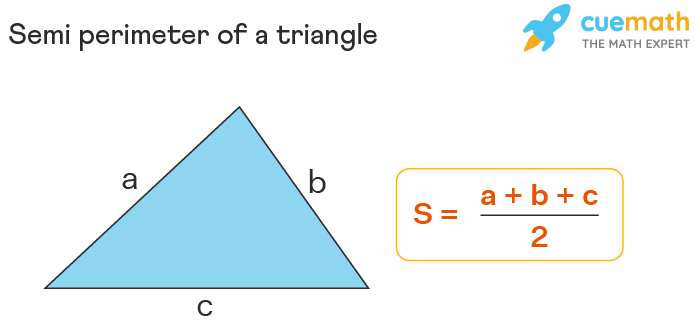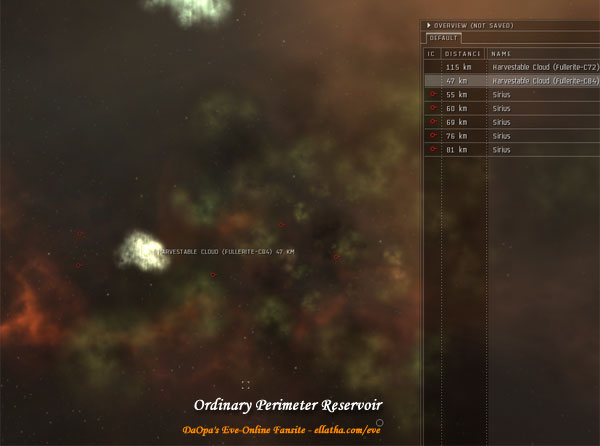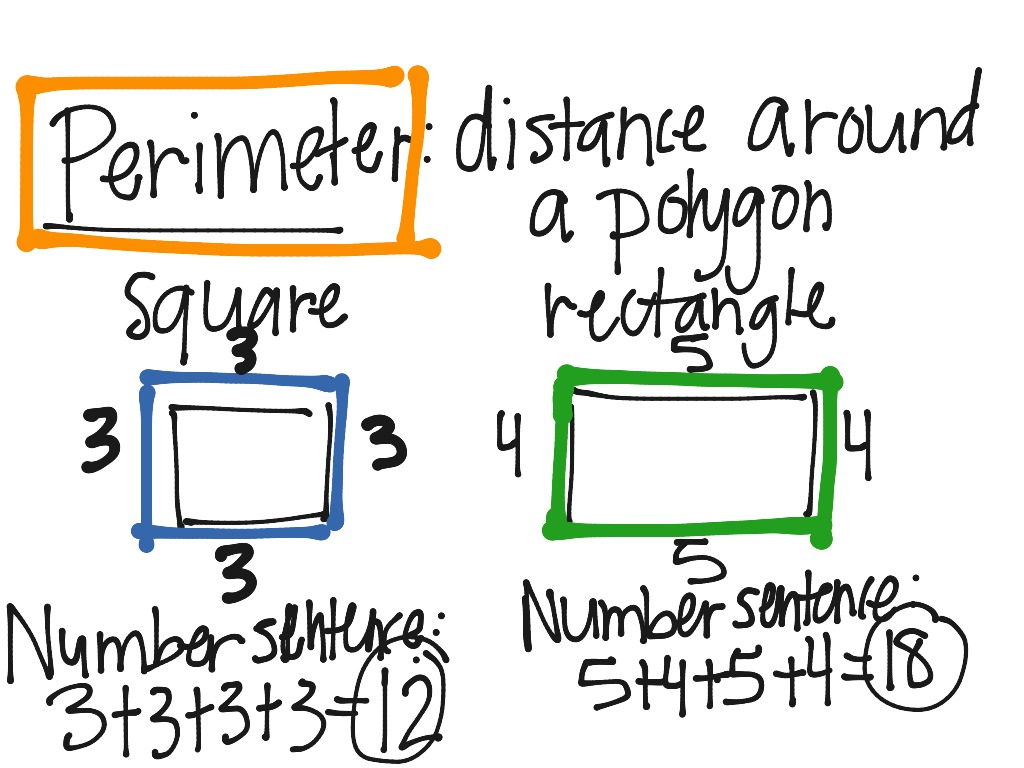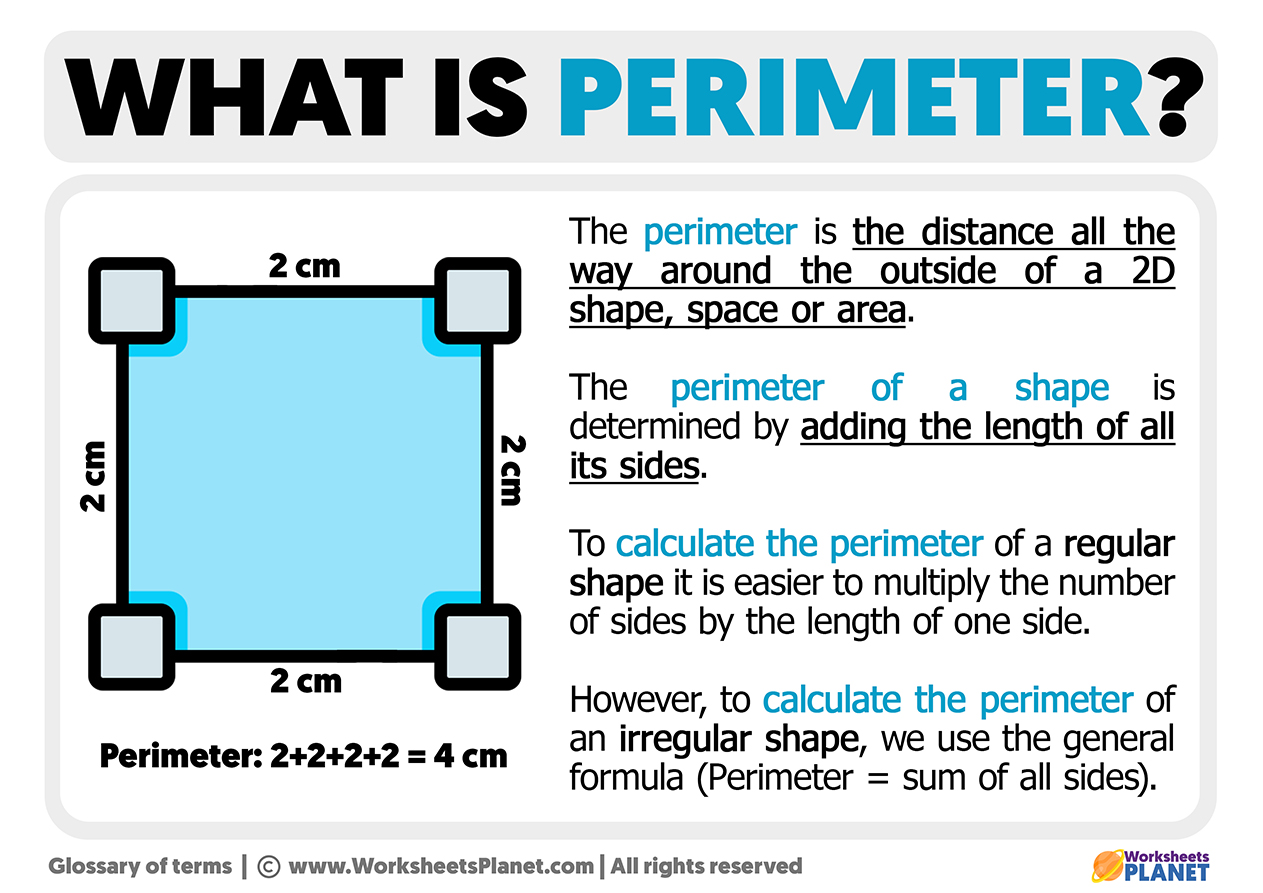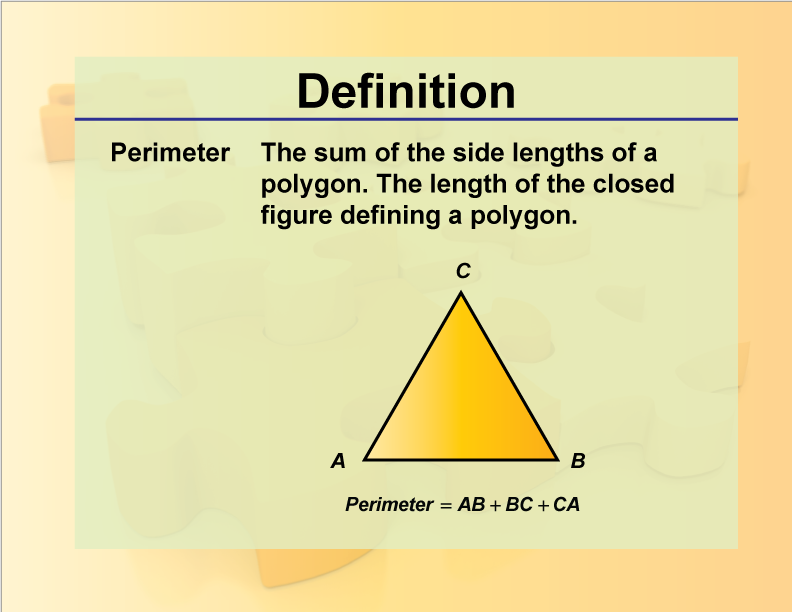Topic questions on perimeter and area: Explore our comprehensive guide on "Questions on Perimeter and Area" to master the basics and advanced concepts. This article covers everything from formulas and common shapes to real-world applications. Whether you’re a student or a professional, you’ll find valuable insights and practical examples to enhance your understanding and problem-solving skills in perimeter and area calculations.
Table of Content
- Questions on Perimeter and Area
- Introduction to Perimeter and Area
- Basic Concepts and Definitions
- Formulas for Calculating Perimeter and Area
- Common Shapes and Their Perimeters
- Common Shapes and Their Areas
- Advanced Perimeter and Area Problems
- Real-World Applications of Perimeter and Area
- Perimeter and Area in Geometry
- Word Problems Involving Perimeter and Area
- Practice Questions and Exercises
- Tips and Tricks for Solving Perimeter and Area Questions
- Visual Aids and Diagrams
- Interactive Tools and Resources
- Frequently Asked Questions (FAQs)
- Conclusion and Summary
- YOUTUBE: Hãy xem video này để tìm hiểu cách tính diện tích và chu vi của một hình hợp thành, đặc biệt là ví dụ về hình L. Hãy cùng thầy J khám phá vấn đề này!
Questions on Perimeter and Area
Understanding perimeter and area is crucial for solving many real-world problems related to space, boundaries, and measurements. Below is a comprehensive guide to common questions and problems involving perimeter and area, complete with examples and solutions.
Key Concepts
- Perimeter: The total length around a two-dimensional shape. Calculated by summing the lengths of all sides.
- Area: The measure of the space enclosed within a shape's boundaries. Expressed in square units.
Perimeter and Area Formulas
| Shape | Perimeter Formula | Area Formula |
|---|---|---|
| Rectangle | \( P = 2(l + w) \) | \( A = l \times w \) |
| Square | \( P = 4s \) | \( A = s^2 \) |
| Triangle | \( P = a + b + c \) | \( A = \frac{1}{2} \times \text{base} \times \text{height} \) |
| Circle | \( P = 2\pi r \) | \( A = \pi r^2 \) |
| Parallelogram | \( P = 2(a + b) \) | \( A = b \times h \) |
| Trapezoid | \( P = a + b_1 + b_2 + c \) | \( A = \frac{1}{2} (b_1 + b_2) \times h \) |
Sample Questions and Solutions
-
Question: Find the perimeter and area of a rectangle with length 8 cm and width 5 cm.
Solution:
- Perimeter: \( P = 2(8 + 5) = 26 \) cm
- Area: \( A = 8 \times 5 = 40 \) cm²
-
Question: Calculate the area of a circle with a radius of 7 cm.
- Area: \( A = \pi \times 7^2 = 154 \) cm² (using \( \pi \approx 3.14 \))
-
Question: A triangle has sides of 6 cm, 8 cm, and 10 cm. Find its perimeter and area.
- Perimeter: \( P = 6 + 8 + 10 = 24 \) cm
- Area: Using Heron's formula:
\( s = \frac{6 + 8 + 10}{2} = 12 \) cm
\( A = \sqrt{s(s-6)(s-8)(s-10)} = \sqrt{12 \times 6 \times 4 \times 2} = 24 \) cm²
Real-World Applications
Calculating perimeter and area is essential in various fields such as:
- Architecture and Construction: Determining the amount of materials needed for fencing, flooring, and roofing.
- Landscaping: Designing gardens, parks, and recreational spaces with accurate measurements.
- Sports: Planning athletic fields, tracks, and courts.
Practice Problems
Here are additional problems to test your understanding:
- Find the area and perimeter of a parallelogram with a base of 10 cm and height of 5 cm, and side length of 7 cm.
- Calculate the perimeter of an equilateral triangle with each side measuring 15 cm.
- A rectangular garden is 20 meters long and 15 meters wide. How much fencing is required to enclose the garden?
- Find the area of a trapezoid with bases of 8 cm and 5 cm, and a height of 6 cm.
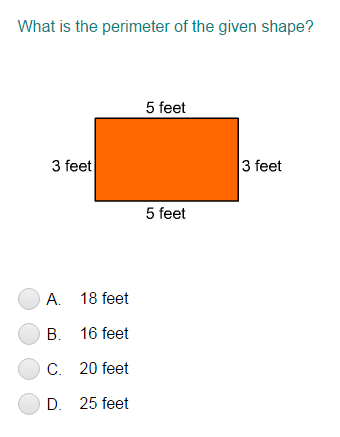
READ MORE:
Introduction to Perimeter and Area
Perimeter and area are fundamental concepts in geometry, essential for understanding the properties and measurements of two-dimensional shapes. The perimeter is the total distance around the boundary of a shape, while the area is the amount of space enclosed within it. Mastering these concepts is crucial for solving various practical problems in fields such as construction, landscaping, and design.
Let's explore these concepts step-by-step:
- Perimeter: This is calculated by adding the lengths of all sides of a shape. For example, the perimeter \( P \) of a rectangle with length \( l \) and width \( w \) is given by: \[ P = 2(l + w) \]
- Area: This is the measure of the surface enclosed by a shape. For a rectangle, the area \( A \) is calculated as: \[ A = l \times w \]
Different shapes have unique formulas for calculating their perimeter and area. Here’s a quick overview:
| Shape | Perimeter Formula | Area Formula |
|---|---|---|
| Square | \( P = 4s \) | \( A = s^2 \) |
| Triangle | \( P = a + b + c \) | \( A = \frac{1}{2} \times \text{base} \times \text{height} \) |
| Circle | \( P = 2\pi r \) | \( A = \pi r^2 \) |
| Parallelogram | \( P = 2(a + b) \) | \( A = b \times h \) |
| Trapezoid | \( P = a + b_1 + b_2 + c \) | \( A = \frac{1}{2} (b_1 + b_2) \times h \) |
Understanding these formulas and how to apply them is the first step in solving problems involving perimeter and area. Whether it's calculating the amount of material needed for a project or determining the size of a garden, these concepts are incredibly useful and practical.
Basic Concepts and Definitions
Understanding the basic concepts of perimeter and area is fundamental in geometry. These measures are essential for describing the size and boundaries of two-dimensional shapes. Here, we'll explore what each term means and how they apply to various shapes.
Perimeter
- Definition: The perimeter is the total distance around the boundary of a two-dimensional shape.
- Units: Since it is a length, the perimeter is measured in linear units such as meters (m), centimeters (cm), inches (in), etc.
- Calculation: The method to calculate the perimeter varies depending on the shape:
- Rectangle: \( P = 2 \times (L + W) \), where \( L \) is the length and \( W \) is the width.
- Square: \( P = 4 \times s \), where \( s \) is the side length.
- Triangle: \( P = a + b + c \), where \( a \), \( b \), and \( c \) are the lengths of the sides.
- Circle: The perimeter, known as the circumference, is \( C = 2 \pi r \), where \( r \) is the radius.
Area
- Definition: The area is the measure of the space enclosed within the boundary of a two-dimensional shape.
- Units: Area is measured in square units such as square meters (m2), square centimeters (cm2), square inches (in2), etc.
- Calculation: Like perimeter, the method to calculate area depends on the shape:
- Rectangle: \( A = L \times W \), where \( L \) is the length and \( W \) is the width.
- Square: \( A = s^2 \), where \( s \) is the side length.
- Triangle: \( A = \frac{1}{2} \times \text{base} \times \text{height} \).
- Circle: The area is \( A = \pi r^2 \), where \( r \) is the radius.
These basic formulas provide a foundation for solving more complex problems involving perimeter and area. Understanding these principles is crucial for students and professionals alike, whether in academic settings or practical applications such as construction and design.
Formulas for Calculating Perimeter and Area
Calculating the perimeter and area of different shapes is a fundamental aspect of geometry. Each shape has specific formulas that allow us to determine these measurements. Below are detailed step-by-step formulas for various common shapes.
1. Rectangle
- Perimeter: The perimeter of a rectangle is the total length around the shape, which is calculated as: \[ P = 2 \times (L + W) \] where \( L \) is the length and \( W \) is the width.
- Area: The area of a rectangle, which measures the space enclosed within it, is: \[ A = L \times W \]
2. Square
- Perimeter: For a square, all sides are equal, so the perimeter is: \[ P = 4 \times s \] where \( s \) is the side length.
- Area: The area of a square is given by: \[ A = s^2 \]
3. Triangle
- Perimeter: The perimeter of a triangle is the sum of the lengths of its sides: \[ P = a + b + c \] where \( a \), \( b \), and \( c \) are the lengths of the sides.
- Area: For a triangle, the area can be calculated using the base and height: \[ A = \frac{1}{2} \times \text{base} \times \text{height} \]
4. Circle
- Circumference (Perimeter): The circumference of a circle is: \[ C = 2 \pi r \] where \( r \) is the radius.
- Area: The area of a circle is calculated as: \[ A = \pi r^2 \]
5. Parallelogram
- Perimeter: The perimeter of a parallelogram is the sum of the lengths of all its sides: \[ P = 2 \times (a + b) \] where \( a \) and \( b \) are the lengths of the adjacent sides.
- Area: The area is found by: \[ A = b \times h \] where \( b \) is the base and \( h \) is the height.
6. Trapezoid
- Perimeter: The perimeter of a trapezoid is the sum of all its sides: \[ P = a + b_1 + b_2 + c \] where \( a \), \( b_1 \), \( b_2 \), and \( c \) are the lengths of the sides.
- Area: The area of a trapezoid is: \[ A = \frac{1}{2} \times (b_1 + b_2) \times h \] where \( b_1 \) and \( b_2 \) are the lengths of the parallel sides, and \( h \) is the height.
Summary Table
| Shape | Perimeter Formula | Area Formula |
|---|---|---|
| Rectangle | \( P = 2 \times (L + W) \) | \( A = L \times W \) |
| Square | \( P = 4 \times s \) | \( A = s^2 \) |
| Triangle | \( P = a + b + c \) | \( A = \frac{1}{2} \times \text{base} \times \text{height} \) |
| Circle | \( C = 2 \pi r \) | \( A = \pi r^2 \) |
| Parallelogram | \( P = 2 \times (a + b) \) | \( A = b \times h \) |
| Trapezoid | \( P = a + b_1 + b_2 + c \) | \( A = \frac{1}{2} \times (b_1 + b_2) \times h \) |
These formulas are the building blocks for solving geometric problems involving perimeter and area. Understanding and applying them correctly allows for accurate measurement and analysis of various shapes in practical contexts.
Common Shapes and Their Perimeters
Perimeter is the total length of the boundary of a two-dimensional shape. Each shape has a specific formula to calculate its perimeter. Here, we will discuss the most common shapes and provide detailed formulas and examples for finding their perimeters.
1. Rectangle
- Formula: The perimeter \( P \) of a rectangle is calculated as: \[ P = 2(L + W) \] where \( L \) is the length and \( W \) is the width.
- Example: For a rectangle with a length of 8 meters and a width of 5 meters, \[ P = 2(8 + 5) = 2 \times 13 = 26 \text{ meters} \]
2. Square
- Formula: Since all sides of a square are equal, the perimeter \( P \) is: \[ P = 4s \] where \( s \) is the side length.
- Example: For a square with a side length of 6 centimeters, \[ P = 4 \times 6 = 24 \text{ centimeters} \]
3. Triangle
- Formula: The perimeter \( P \) of a triangle is the sum of the lengths of its three sides: \[ P = a + b + c \] where \( a \), \( b \), and \( c \) are the lengths of the sides.
- Example: For a triangle with side lengths of 3 cm, 4 cm, and 5 cm, \[ P = 3 + 4 + 5 = 12 \text{ centimeters} \]
4. Circle
- Formula: The perimeter of a circle, known as the circumference \( C \), is given by: \[ C = 2 \pi r \] where \( r \) is the radius of the circle.
- Example: For a circle with a radius of 7 meters, \[ C = 2 \pi \times 7 = 14 \pi \approx 43.98 \text{ meters} \]
5. Parallelogram
- Formula: The perimeter \( P \) of a parallelogram is: \[ P = 2(a + b) \] where \( a \) and \( b \) are the lengths of the adjacent sides.
- Example: For a parallelogram with sides of 9 cm and 5 cm, \[ P = 2(9 + 5) = 2 \times 14 = 28 \text{ centimeters} \]
6. Trapezoid
- Formula: The perimeter \( P \) of a trapezoid is the sum of all its sides: \[ P = a + b_1 + b_2 + c \] where \( a \), \( b_1 \), \( b_2 \), and \( c \) are the lengths of the sides.
- Example: For a trapezoid with side lengths of 3 cm, 4 cm, 5 cm, and 6 cm, \[ P = 3 + 4 + 5 + 6 = 18 \text{ centimeters} \]
These formulas allow us to quickly determine the perimeter of common geometric shapes, which is crucial for various practical applications such as determining the length of fencing required for a property or the amount of material needed for a border.

Common Shapes and Their Areas
Calculating the area of common shapes is a fundamental aspect of geometry that allows us to measure the space enclosed within these shapes. Below, we provide detailed formulas and examples for finding the areas of various common geometric shapes.
1. Rectangle
- Formula: The area \( A \) of a rectangle is calculated by multiplying its length \( L \) and width \( W \): \[ A = L \times W \]
- Example: For a rectangle with a length of 10 meters and a width of 4 meters, \[ A = 10 \times 4 = 40 \text{ square meters} \]
2. Square
- Formula: The area \( A \) of a square is found by squaring the length of one of its sides \( s \): \[ A = s^2 \]
- Example: For a square with a side length of 5 centimeters, \[ A = 5^2 = 25 \text{ square centimeters} \]
3. Triangle
- Formula: The area \( A \) of a triangle is determined by multiplying the base \( b \) by the height \( h \) and then dividing by 2: \[ A = \frac{1}{2} \times b \times h \]
- Example: For a triangle with a base of 8 meters and a height of 6 meters, \[ A = \frac{1}{2} \times 8 \times 6 = 24 \text{ square meters} \]
4. Circle
- Formula: The area \( A \) of a circle is calculated using the radius \( r \) with the formula: \[ A = \pi r^2 \] where \( \pi \approx 3.14159 \).
- Example: For a circle with a radius of 3 meters, \[ A = \pi \times 3^2 = 9\pi \approx 28.27 \text{ square meters} \]
5. Parallelogram
- Formula: The area \( A \) of a parallelogram is found by multiplying the base \( b \) by the vertical height \( h \): \[ A = b \times h \]
- Example: For a parallelogram with a base of 7 centimeters and a height of 3 centimeters, \[ A = 7 \times 3 = 21 \text{ square centimeters} \]
6. Trapezoid
- Formula: The area \( A \) of a trapezoid is calculated by adding the lengths of the two parallel sides \( b_1 \) and \( b_2 \), multiplying by the height \( h \), and dividing by 2: \[ A = \frac{1}{2} \times (b_1 + b_2) \times h \]
- Example: For a trapezoid with parallel sides of 6 meters and 10 meters, and a height of 4 meters, \[ A = \frac{1}{2} \times (6 + 10) \times 4 = \frac{1}{2} \times 16 \times 4 = 32 \text{ square meters} \]
These formulas help in finding the area of various shapes, which is crucial for many practical applications such as determining the amount of paint needed for a surface or the size of a plot of land. Understanding and applying these area formulas allow for accurate measurements and effective use of space in various fields.
Advanced Perimeter and Area Problems
Advanced problems involving perimeter and area go beyond the basic calculations and often require a deeper understanding of geometric principles. These problems may include irregular shapes, composite figures, and scenarios that combine multiple geometric concepts. Here, we explore various advanced problems with detailed step-by-step solutions.
1. Irregular Shapes
Calculating the perimeter and area of irregular shapes involves breaking the shape down into smaller, more manageable components.
- Example: Consider an irregular quadrilateral with sides of different lengths. To find its perimeter, sum the lengths of all the sides.
- Steps:
- Identify the individual segments that make up the shape.
- Calculate the length of each segment if not directly given.
- Sum the lengths to get the total perimeter.
For area calculations, divide the shape into simpler shapes (like triangles or rectangles), calculate the area of each part, and then sum these areas.
2. Composite Figures
Composite figures are made up of two or more simple shapes. Finding their perimeter and area requires combining the formulas for each component shape.
- Example: A composite figure consisting of a rectangle and a semicircle.
- Steps:
- Calculate the perimeter of the rectangle.
- Find the circumference of the semicircle and add it to the perimeter of the rectangle, making sure not to count the shared side twice.
- For area, compute the area of the rectangle and the semicircle separately, then add them together. \[ A_{\text{total}} = A_{\text{rectangle}} + A_{\text{semicircle}} \] where \[ A_{\text{rectangle}} = L \times W \] and \[ A_{\text{semicircle}} = \frac{1}{2} \pi r^2 \]
3. Shapes with Missing Sides
Sometimes, problems may provide only partial information, requiring you to deduce missing lengths or areas using geometric relationships and properties.
- Example: A triangle with an unknown side, but with given angles and other sides.
- Steps:
- Use the given information and geometric properties like the Pythagorean theorem or trigonometric ratios to find the missing side.
- Once all sides are known, calculate the perimeter by summing the lengths.
- For the area, use a suitable formula based on the available data, such as: \[ A = \frac{1}{2} \times \text{base} \times \text{height} \] or \[ A = \sqrt{s(s-a)(s-b)(s-c)} \] where \( s \) is the semi-perimeter, \( s = \frac{a + b + c}{2} \).
4. Perimeter and Area of Sector and Segment
For circular sectors and segments, the formulas for perimeter and area involve angles and the radius of the circle.
- Example: Finding the perimeter and area of a sector of a circle with a central angle \( \theta \).
- Steps:
- Calculate the length of the arc of the sector: \[ \text{Arc Length} = \theta \times r \] where \( \theta \) is in radians.
- Add the lengths of the two radii to the arc length to get the perimeter: \[ P = 2r + \theta r \]
- Calculate the area of the sector using: \[ A = \frac{1}{2} \theta r^2 \]
- For segments:
- Subtract the area of the triangle formed by the two radii and the arc from the area of the sector.
- The perimeter includes the arc length and the chord length. \[ \text{Chord Length} = 2r \sin \left( \frac{\theta}{2} \right) \]
5. Real-World Applications
Advanced perimeter and area problems can also apply to real-world scenarios, such as landscaping, construction, and art. For example, calculating the material needed to cover an area or the boundary length for a fence.
- Example: Determine the amount of fencing required to enclose a garden that includes a rectangular lawn and a circular flower bed.
- Steps:
- Calculate the perimeter of the rectangular lawn.
- Calculate the circumference of the circular flower bed.
- Add the two to get the total fencing needed.
By mastering these advanced problems, you gain deeper insight and the ability to tackle complex geometric challenges effectively.
Real-World Applications of Perimeter and Area
Understanding perimeter and area is not only essential for solving mathematical problems but also has numerous real-world applications. Here are some practical scenarios where knowledge of perimeter and area comes in handy:
- Construction: Builders and architects use perimeter and area calculations extensively when designing structures such as buildings, roads, and bridges. They need to calculate the amount of material required for construction, estimate costs, and ensure proper utilization of space.
- Farming: Farmers need to determine the area of their fields to optimize crop planting and irrigation systems. They also use perimeter calculations to fence their land or enclose animal pens.
- Landscaping: Landscape designers use area calculations to plan garden layouts, determine the amount of sod or mulch needed, and estimate the cost of landscaping projects. Perimeter calculations help in designing pathways, borders, and retaining walls.
- Home Improvement: When renovating or redecorating homes, homeowners often need to calculate the area of rooms for flooring, wallpaper, or paint requirements. Perimeter measurements are useful for installing baseboards, crown molding, or fencing around the property.
- Parcel Delivery: Logistics companies optimize delivery routes based on the distance (perimeter) between locations and the total area to cover. Efficient route planning helps minimize fuel consumption and delivery times.
- Art and Design: Artists and designers use geometric shapes and dimensions to create visually appealing compositions. Understanding perimeter and area helps in proportioning elements, creating patterns, and designing logos or packaging.
These are just a few examples of how perimeter and area concepts are applied in various fields. Mastering these mathematical principles not only enhances problem-solving skills but also enables individuals to make informed decisions in everyday life.
Perimeter and Area in Geometry
Geometry is the branch of mathematics that deals with shapes, sizes, and properties of space. Perimeter and area are fundamental concepts in geometry, providing insights into the measurements and characteristics of various geometric figures. Here's how perimeter and area are applied in geometry:
- Perimeter: The perimeter of a geometric figure is the total length of its boundary. In geometry, perimeter calculations help determine the distance around shapes such as squares, rectangles, triangles, circles, and irregular polygons. It is calculated by adding the lengths of all sides or segments that form the boundary of the figure.
- Area: The area of a geometric figure is the measure of the space enclosed by its boundary. Area calculations are crucial for determining surface coverage, space utilization, and material requirements. Different formulas are used to calculate the area of various shapes, including squares, rectangles, triangles, circles, and irregular polygons.
- Relationships: Understanding the relationship between perimeter and area is essential in geometry. For example, increasing the length of one side of a rectangle while keeping the other side constant will increase both the perimeter and the area. However, changing the dimensions of a shape can result in different outcomes for perimeter and area, highlighting the importance of geometric properties and formulas.
- Geometric Figures: Perimeter and area concepts are applied to analyze and compare different geometric figures. For instance, in a circle, the perimeter is referred to as the circumference, which is calculated using the formula 2πr, where r is the radius. The area of a circle is calculated using the formula πr^2. Similarly, the perimeter and area of other geometric shapes are determined based on their unique properties and dimensions.
- Problem Solving: Perimeter and area problems are common in geometry and often involve real-life scenarios or abstract mathematical challenges. Solving these problems requires applying geometric principles, formulas, and problem-solving strategies to find solutions. Practical applications of perimeter and area in geometry include designing blueprints, calculating land areas, and analyzing spatial relationships in maps or architectural drawings.
By mastering perimeter and area concepts in geometry, students develop spatial reasoning skills, enhance their problem-solving abilities, and gain a deeper understanding of the properties and applications of geometric shapes.
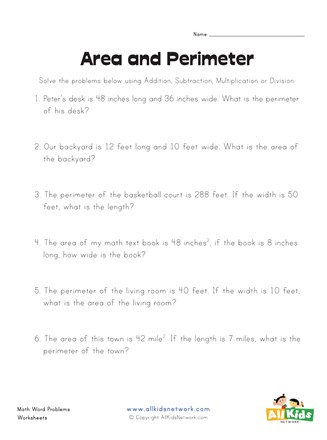
Word Problems Involving Perimeter and Area
Word problems involving perimeter and area provide practical applications of mathematical concepts in real-life scenarios. These problems often require critical thinking and problem-solving skills to analyze and solve. Here are some common types of word problems involving perimeter and area:
- Rectangular Gardens: A word problem might describe a rectangular garden with given dimensions and ask students to calculate its perimeter or area. Students need to apply the formulas for perimeter (2(length + width)) and area (length × width) to find the solution.
- Irregular Shapes: Some word problems involve irregular shapes where students must break down the shape into simpler components to calculate perimeter or area. This requires understanding the properties of shapes and applying appropriate formulas or strategies.
- Fencing Projects: Word problems related to fencing projects often involve determining the amount of fencing needed to enclose a given area or perimeter. Students may need to consider factors such as gate placement, material costs, and efficiency of fencing installation.
- Room Dimensions: In home improvement scenarios, word problems may describe rooms with irregular shapes or unusual dimensions. Students must calculate the area of the room to determine the amount of flooring, paint, or wallpaper required for renovation.
- Landscaping Designs: Word problems involving landscaping designs may require students to calculate the area of garden beds, pathways, or lawns. This involves applying area formulas and considering practical aspects such as plant spacing and material coverage.
Word problems involving perimeter and area help students develop mathematical reasoning skills and apply mathematical concepts to real-world situations. By practicing these types of problems, students not only improve their problem-solving abilities but also gain a deeper understanding of the relevance and importance of geometry in everyday life.
Practice Questions and Exercises
Practice makes perfect when it comes to mastering perimeter and area concepts. Below are some practice questions and exercises to help reinforce your understanding:
- Calculate Perimeter: Find the perimeter of a rectangle with length 8 cm and width 5 cm.
- Calculate Area: Determine the area of a square with side length 10 meters.
- Perimeter of Irregular Shape: Given the measurements of the sides of an irregular polygon (6 cm, 8 cm, 5 cm, and 7 cm), calculate its perimeter.
- Area of Compound Shape: Calculate the total area of a compound shape made up of a rectangle (length = 12 cm, width = 6 cm) and a square (side length = 8 cm).
- Real-World Application: A rectangular field has a length of 40 meters and a width of 30 meters. Calculate the amount of fencing needed to enclose the field.
Take your time to work through each question, applying the appropriate formulas and methods. Check your answers against the solutions provided to ensure accuracy. Practicing these exercises will not only improve your problem-solving skills but also build confidence in tackling perimeter and area problems.
Tips and Tricks for Solving Perimeter and Area Questions
Mastering perimeter and area concepts requires understanding key formulas and applying problem-solving strategies effectively. Here are some tips and tricks to help you tackle perimeter and area questions with confidence:
- Know Your Formulas: Familiarize yourself with the formulas for calculating perimeter and area of common geometric shapes, such as squares, rectangles, triangles, circles, and irregular polygons. Having these formulas memorized will save time during problem-solving.
- Identify Given Information: Carefully read the problem and identify the given measurements or dimensions. Determine whether you need to find the perimeter, area, or both, and what units are provided (e.g., centimeters, meters, inches).
- Draw Diagrams: Visualize the geometric figure described in the problem by sketching a diagram. Label the sides, lengths, and any other relevant information. Drawing a clear diagram can help you understand the problem better and identify the correct approach for solving it.
- Break Down Complex Shapes: For irregular or compound shapes, break them down into simpler components (e.g., rectangles, triangles) and calculate the perimeter or area of each component separately. Then, add or subtract the individual measurements to find the total perimeter or area.
- Check Units: Pay attention to units of measurement and ensure consistency when performing calculations. Convert units if necessary to maintain uniformity (e.g., convert centimeters to meters or inches to feet).
- Use Real-World Context: Relate the problem to real-life situations to better understand its significance and relevance. Visualize scenarios where perimeter and area calculations are used in construction, landscaping, or everyday tasks.
- Practice Regularly: Practice solving a variety of perimeter and area problems regularly to strengthen your skills and familiarity with different problem types. Use textbooks, online resources, or worksheets to find ample practice exercises.
By following these tips and tricks, you can approach perimeter and area questions systematically, efficiently, and accurately. With practice and perseverance, you'll become proficient in solving a wide range of geometric problems.
Visual Aids and Diagrams
Visual aids and diagrams play a crucial role in understanding perimeter and area concepts by providing clear representations of geometric shapes and measurements. Below are some examples of visual aids and diagrams commonly used in teaching and learning about perimeter and area:
- Grid Paper: Grid paper provides a convenient way to draw and measure geometric figures accurately. Each square on the grid represents a specific unit of measurement, allowing students to visualize and calculate perimeter and area effectively.
- Geometric Shapes: Diagrams of geometric shapes, such as squares, rectangles, triangles, circles, and polygons, illustrate the relationships between different dimensions and sides. These diagrams help students identify key measurements and understand how perimeter and area are calculated for each shape.
- Scale Drawings: Scale drawings use proportional representation to depict real-life objects or scenarios. Students can use scale drawings to visualize the relative sizes of different components and make accurate measurements of perimeter and area based on the scale provided.
- Interactive Apps: Online interactive apps and software programs allow students to explore perimeter and area concepts dynamically. These tools often include features such as drag-and-drop shapes, adjustable dimensions, and instant feedback, making learning engaging and interactive.
- Real-Life Scenarios: Visual aids depicting real-life scenarios, such as blueprints, floor plans, maps, and architectural drawings, help students understand how perimeter and area calculations are applied in practical situations. Analyzing these visual representations enhances problem-solving skills and promotes critical thinking.
By utilizing visual aids and diagrams, educators can enhance the learning experience and facilitate deeper understanding of perimeter and area concepts. Visual representations provide clarity, context, and opportunities for hands-on exploration, fostering a solid foundation in geometry.

Interactive Tools and Resources
Interactive tools and resources offer engaging ways to explore and practice perimeter and area concepts. Here are some interactive tools and resources you can use to enhance your learning:
- GeoGebra: GeoGebra is a dynamic mathematics software that provides interactive tools for geometry, algebra, and calculus. It offers features such as graphing, geometry construction, and measurement tools, making it ideal for exploring perimeter and area concepts.
- Desmos: Desmos is a free online graphing calculator that allows users to graph functions, plot data, and explore mathematical concepts. It also offers geometry tools for creating shapes, measuring distances, and calculating areas, providing hands-on learning experiences.
- Khan Academy: Khan Academy offers a wide range of educational resources, including interactive lessons, practice exercises, and instructional videos on geometry topics. The platform provides personalized learning experiences tailored to individual needs and skill levels.
- NCTM Illuminations: The National Council of Teachers of Mathematics (NCTM) Illuminations website offers interactive tools, lesson plans, and activities for teaching mathematics. It includes virtual manipulatives, interactive games, and simulations that support conceptual understanding of perimeter and area.
- Mathigon: Mathigon is an interactive mathematics platform that offers courses, textbooks, and interactive lessons for learners of all ages. It features engaging visualizations, interactive activities, and exploratory tools to deepen understanding of mathematical concepts, including perimeter and area.
These interactive tools and resources provide engaging ways to explore perimeter and area concepts, practice problem-solving skills, and deepen conceptual understanding. Whether you're a student, teacher, or lifelong learner, these resources offer valuable opportunities to enhance your mathematical proficiency.
Frequently Asked Questions (FAQs)
Here are some frequently asked questions about perimeter and area, along with their answers:
- What is perimeter?
Perimeter is the distance around a closed geometric figure. It is calculated by adding the lengths of all the sides or segments that form the boundary of the figure.
- What is area?
Area is the measure of the space enclosed by a geometric figure. It is calculated by multiplying the length of one side by the perpendicular distance to that side.
- How do you calculate the perimeter of a rectangle?
To calculate the perimeter of a rectangle, add the lengths of all four sides: Perimeter = 2(length + width).
- How do you calculate the area of a triangle?
To calculate the area of a triangle, multiply the base by the height and divide by 2: Area = (base × height) / 2.
- What is the difference between perimeter and area?
Perimeter is the distance around a shape, while area is the measure of the space enclosed by the shape. Perimeter is measured in linear units (such as inches or meters), while area is measured in square units (such as square inches or square meters).
These are just a few common questions about perimeter and area. If you have any other questions, feel free to ask!
Conclusion and Summary
In conclusion, understanding perimeter and area is essential in various aspects of mathematics and real-life applications. Throughout this comprehensive guide, we've explored the basic concepts, formulas, and practical applications of perimeter and area.
We began by introducing the fundamental definitions of perimeter and area, followed by explanations of how to calculate them for different geometric shapes. We then delved into real-world applications, such as construction, farming, and home improvement, where perimeter and area calculations are indispensable.
Next, we discussed word problems, practice questions, and exercises designed to reinforce understanding and problem-solving skills. We also provided tips and tricks for approaching perimeter and area questions effectively, along with visual aids and interactive tools to enhance learning.
Finally, we addressed frequently asked questions to clarify common doubts and misconceptions about perimeter and area. By mastering these concepts and practicing regularly, individuals can develop strong mathematical reasoning skills and apply them confidently in various contexts.
Overall, the study of perimeter and area is not only intellectually stimulating but also highly relevant in everyday life. We encourage continuous exploration and application of these concepts to deepen understanding and foster lifelong learning.
Hãy xem video này để tìm hiểu cách tính diện tích và chu vi của một hình hợp thành, đặc biệt là ví dụ về hình L. Hãy cùng thầy J khám phá vấn đề này!
Tìm Diện tích và Chu vi của Hình Composite | Ví dụ hình L | Hình học | Toán với thầy J
READ MORE:
Khám phá các trò chơi toán học thú vị và nhanh trí về chu vi và diện tích. Hãy cùng học và rèn luyện kỹ năng toán học của bạn!
TRÒ CHƠI TOÁN HỌC | TƯ DUY NHANH | Chu Vi và Diện Tích
